Zapotecs and Mixes
We got invited to San Baltazar week before last to celebrate finishing the roof on one of Epifanio’s sons' home. Juan Carlos (the owner) is in the US and sends money down when he can. He hopes to have the house finished if and when he returns. San Baltazar is about thirty minutes from our home heading down towards Tehuantepec. The village is located in a small valley. The view of the surrounding mountains is simply beautiful. When we arrived most of the cement had been poured. Epifanio told me they’d used about eight tons all of it carried up ladders a bucket at a time. The first layer was cement mixed with sand and gravel. Once that layer had dried a little an additional layer of just cement and sand was poured on top of the first layer. The second layer about a half inch thick is what keeps the rain from passing through the roof. The cement is supported underneath by planks that are supported by vertical beams. The workers, eleven of them, chatted and gave instructions in Zapotec changing only to Spanish to speak to us. Once work was completed we ate chicken and mole.
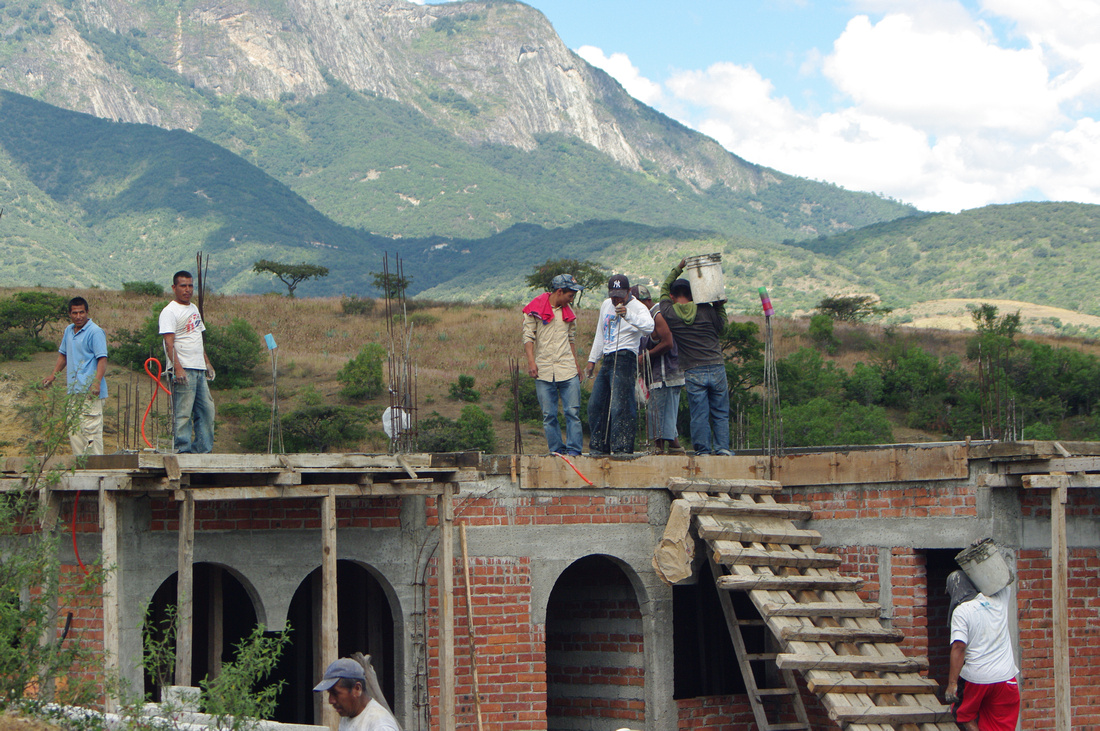

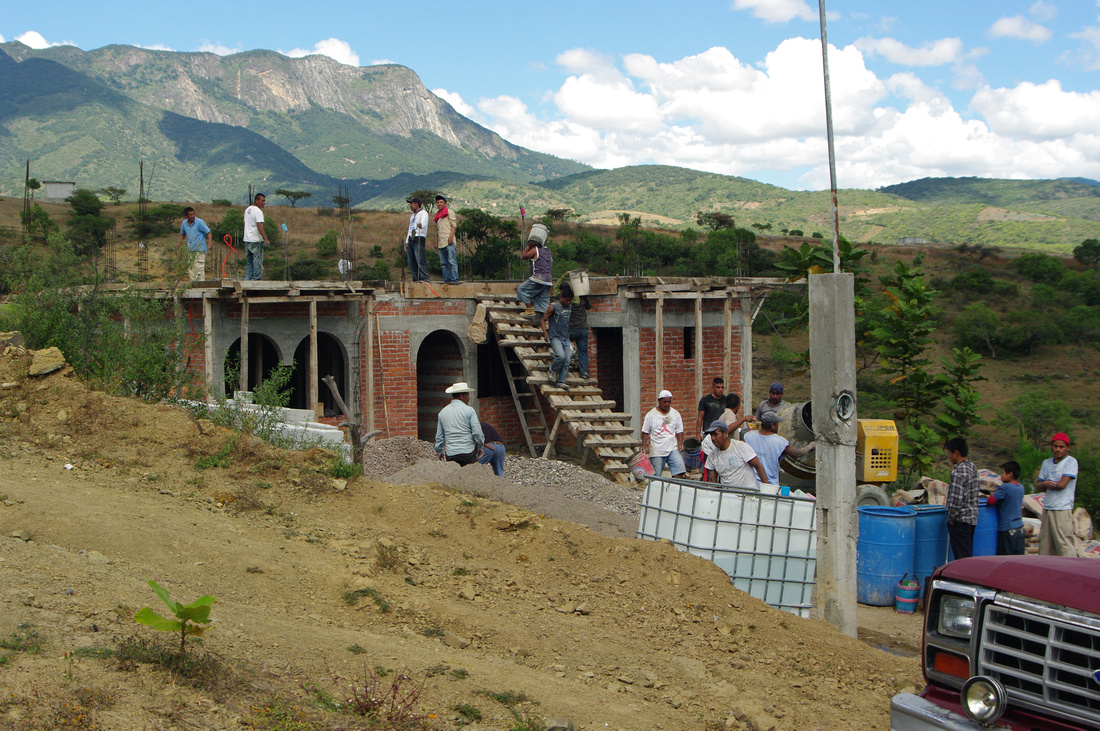



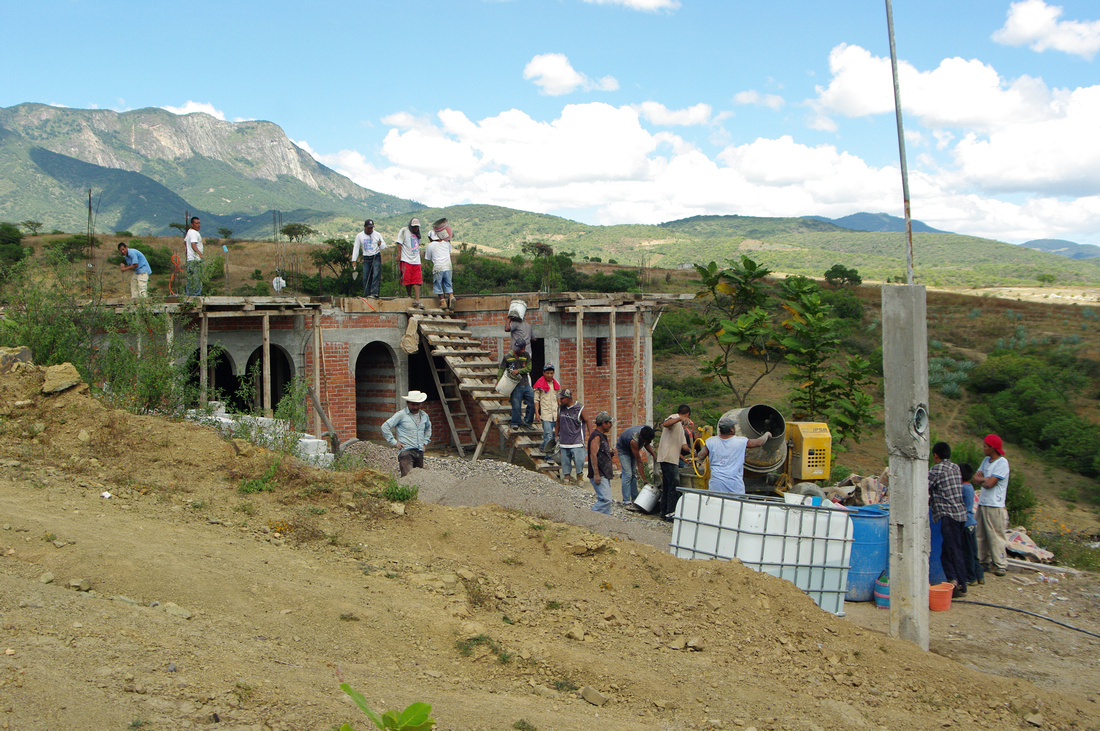

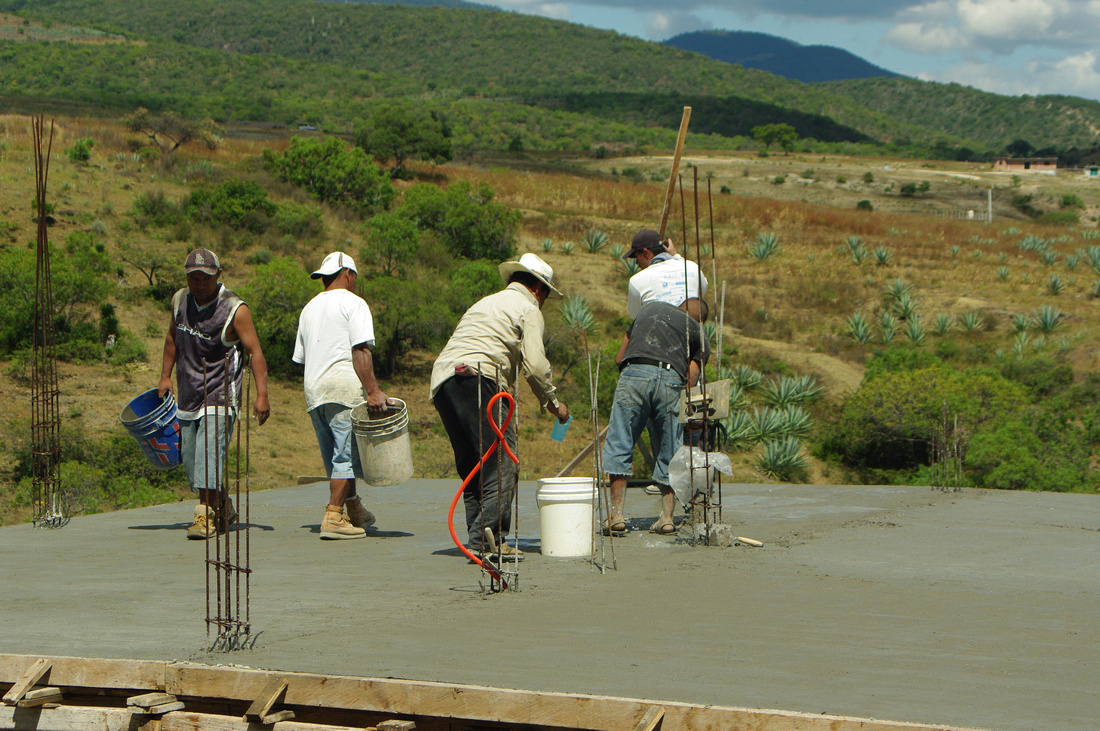



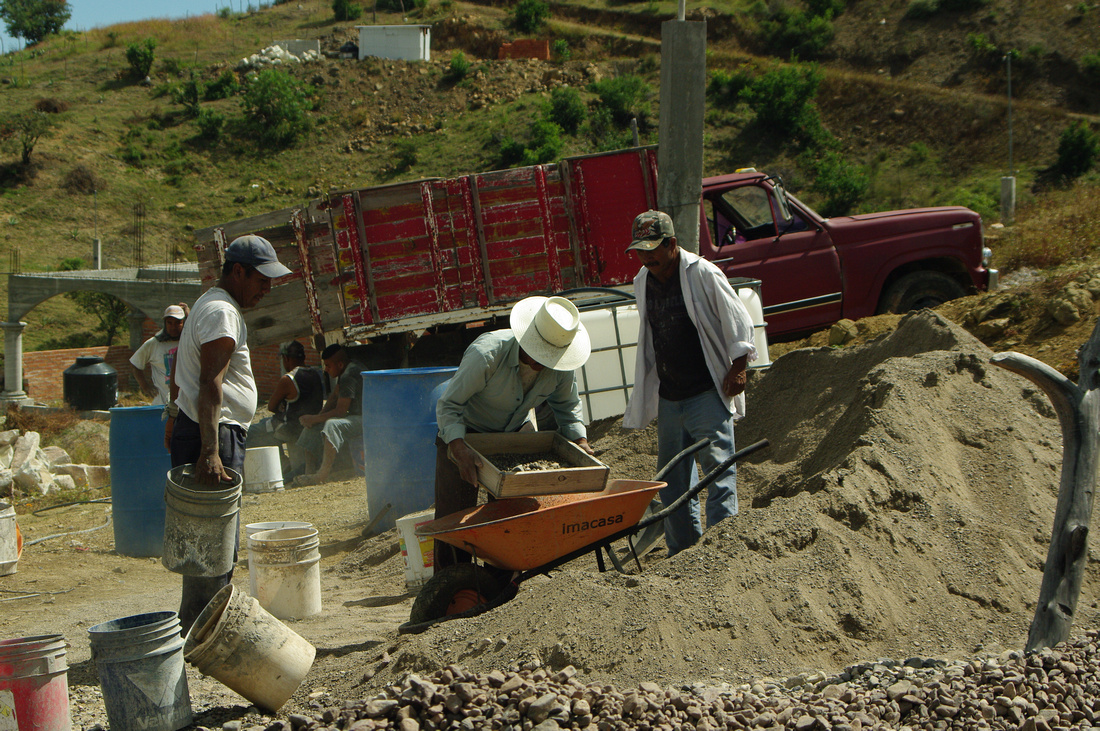



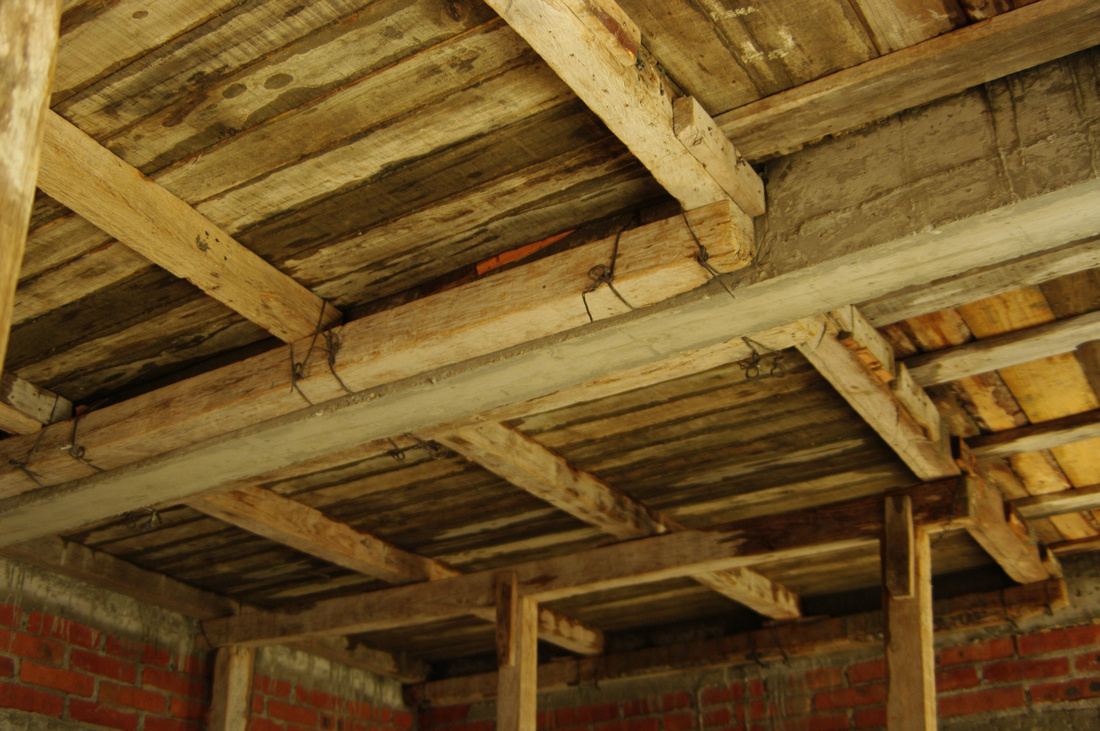



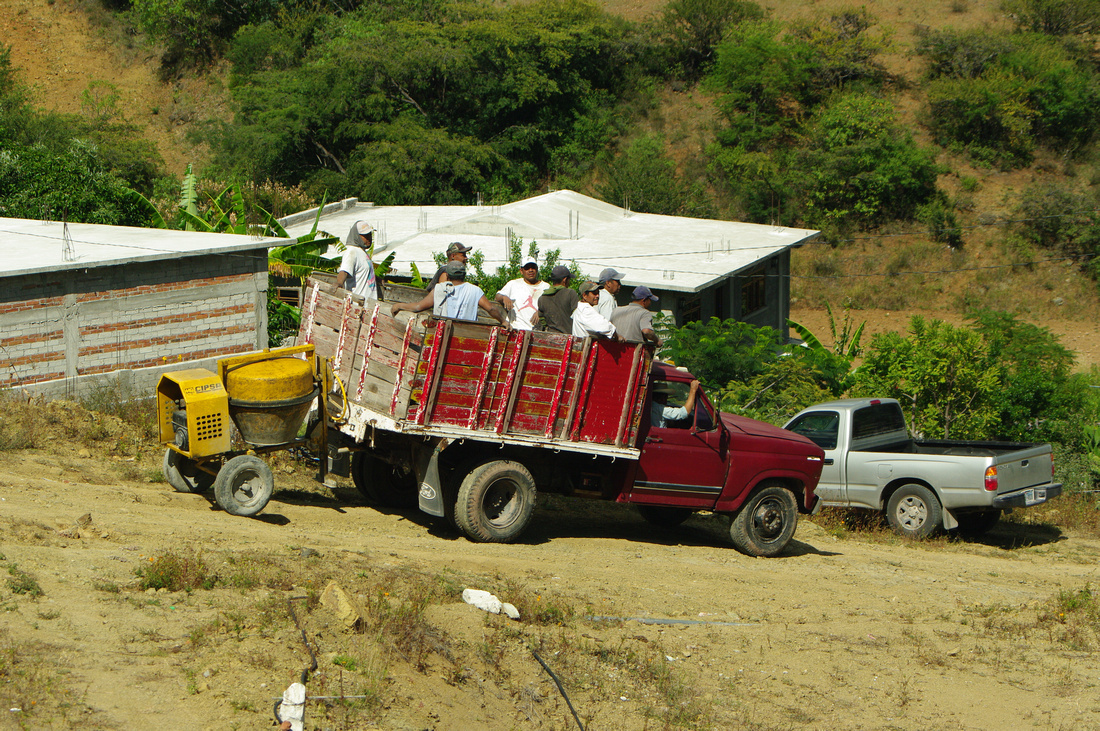

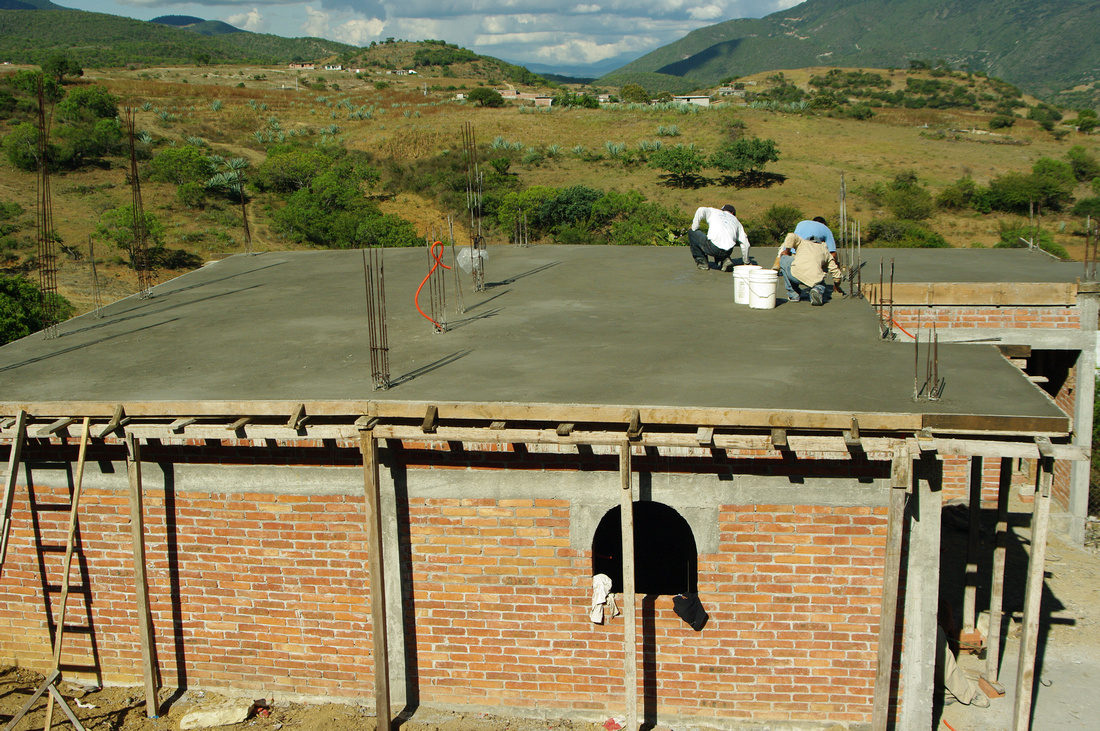

Two weeks ago Beth and I drove up to Ayutla about a two hour drive. Our house is at about five thousand feet altitude. I’m guessing Ayutla is another fifteen hundred. Even though the road is paved (poorly) it reminds me of the logging roads in Western Washington. Very quickly the terrain changes to pine forests. By the time you reach Ayutla the forests are dense. The area around Ayutla is occupied by the Mixe. Because of their remote location and their fierceness the Mixe were never dominated. Both the Aztecs and later the Spanish tried but neither was successful. The Mixe tend to be a little shorter in height but have a reputation of being very strong. I remember hearing stories about the Mixe walking to Tlacolula to purchase goods (including bags of cement) and then walking back home taking several days to make the journey. It’s been my experience that the Mixe are more standoffish than other groups. They are not unfriendly but wary. Never been approached for conversation. But… once confidence has been established they are very friendly. It’s also been my observation that the Mixe as a group tend to be more politically minded. I photographed a wedding in Ayutla in ninety four. At the reception I was bombarded with political questions. They were very interested in my opinions on many topics. I also believe they are the most tied to their ancestral lineage. Their language has been converted to written form. I noticed walking around the town that the street names and numbers on buildings are in Mixe. As you’ll notice from the photographs there isn’t a lot of area that is flat. Almost all buildings and homes are built on the side of a mountain. Also interesting is how buildings and homes conform to unusual lot configurations. They must be in incredible shape from all the walking! I have a good friend from the village of Cero Pelon (bald mountain) whose mother is in her nineties and still going. I’ll never forget my first visit to Cero Pelon. Abelardo drove the hour and a half drive to the village. Once at the village we walked a path for about forty minutes and arrived at his mother’s home. No electricity. To this day I have no idea where the water source was. Her cabin was built from wood. When we ate I was invited into the kitchen which consisted of about a four foot hole dug out in about a fifteen foot diameter. The round cover was made of plank boards. I sat there eating my bean tamales watching the smoke from her fire filter out through the spaces between the planks. The day we were in Ayutla was a holiday so the town wasn’t bustling as it had been in past visits. We spent about an hour sightseeing and making photographs. A new highway is being built that will pass by Ayutla. Hopefully they’ll receive a tourism boost. Anyway the drive down to Tlacolula will certainly be safer and faster.
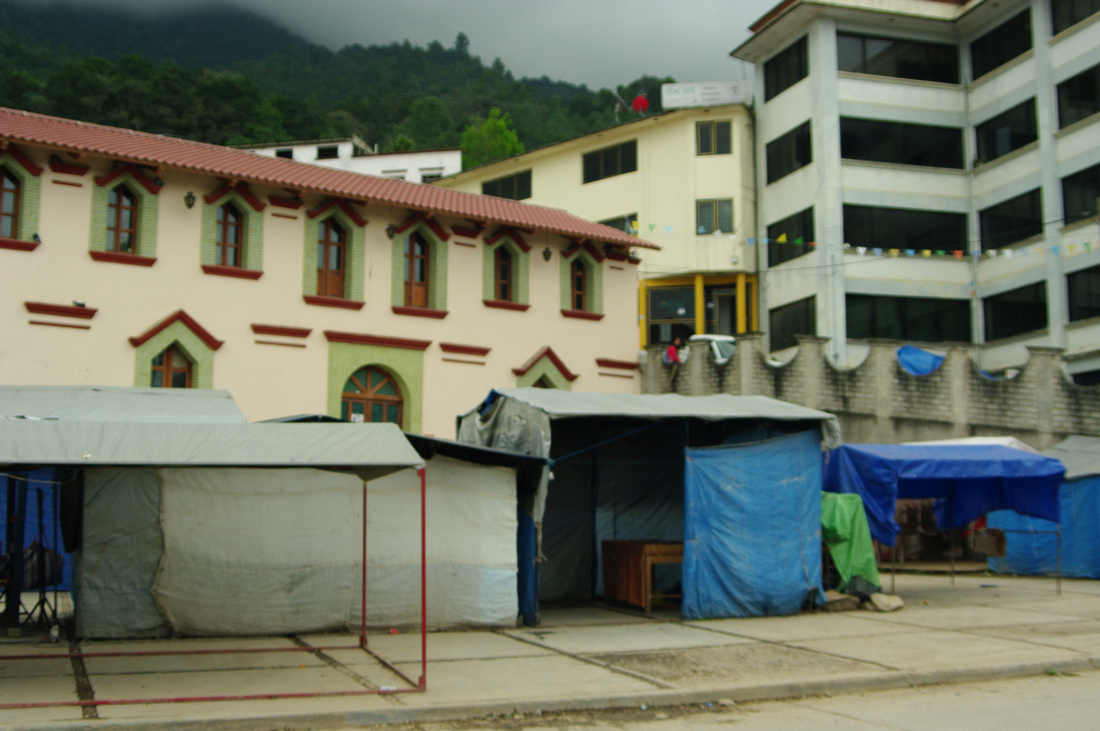



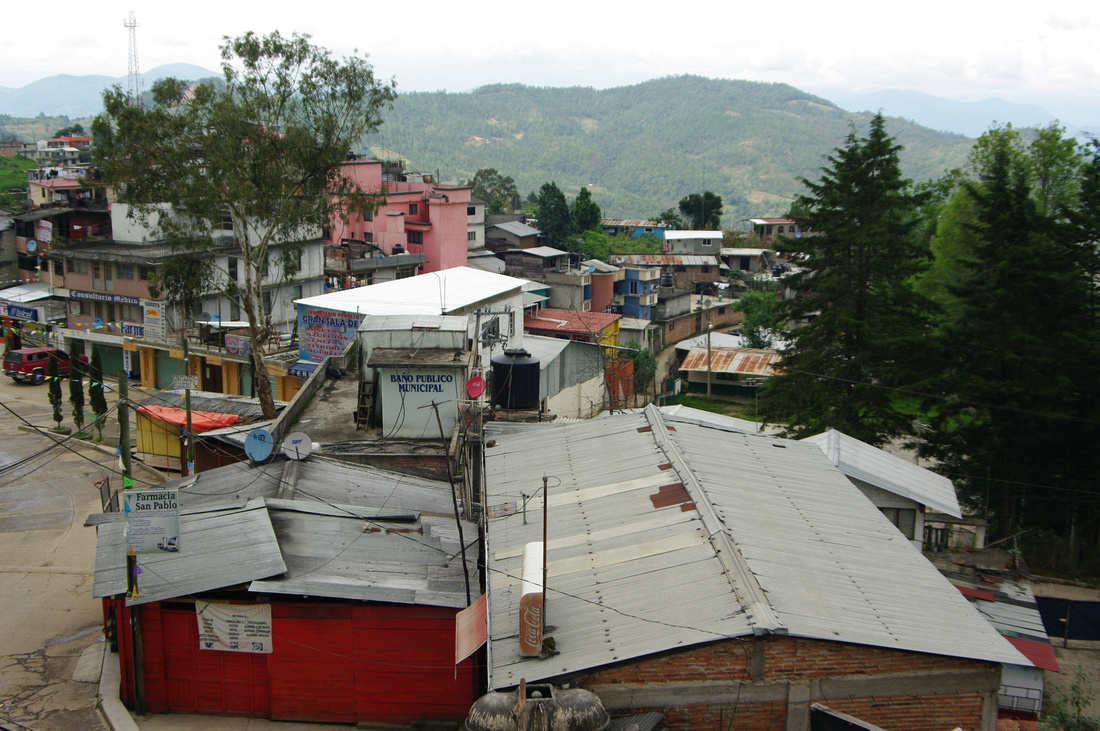





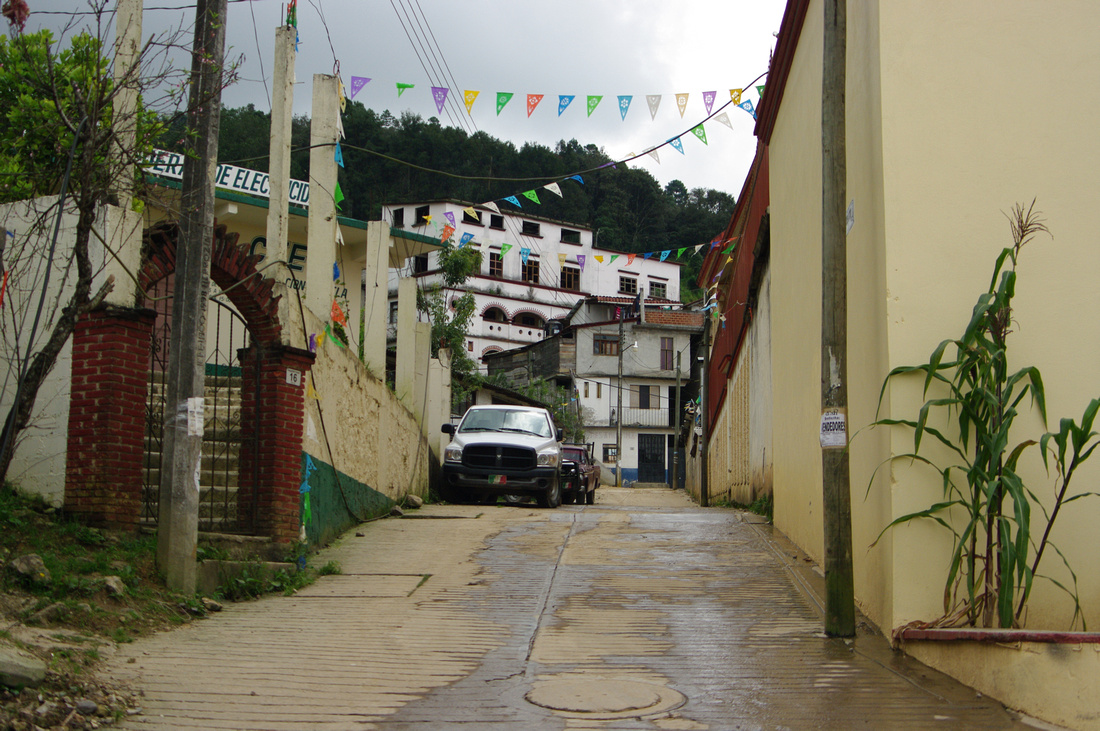

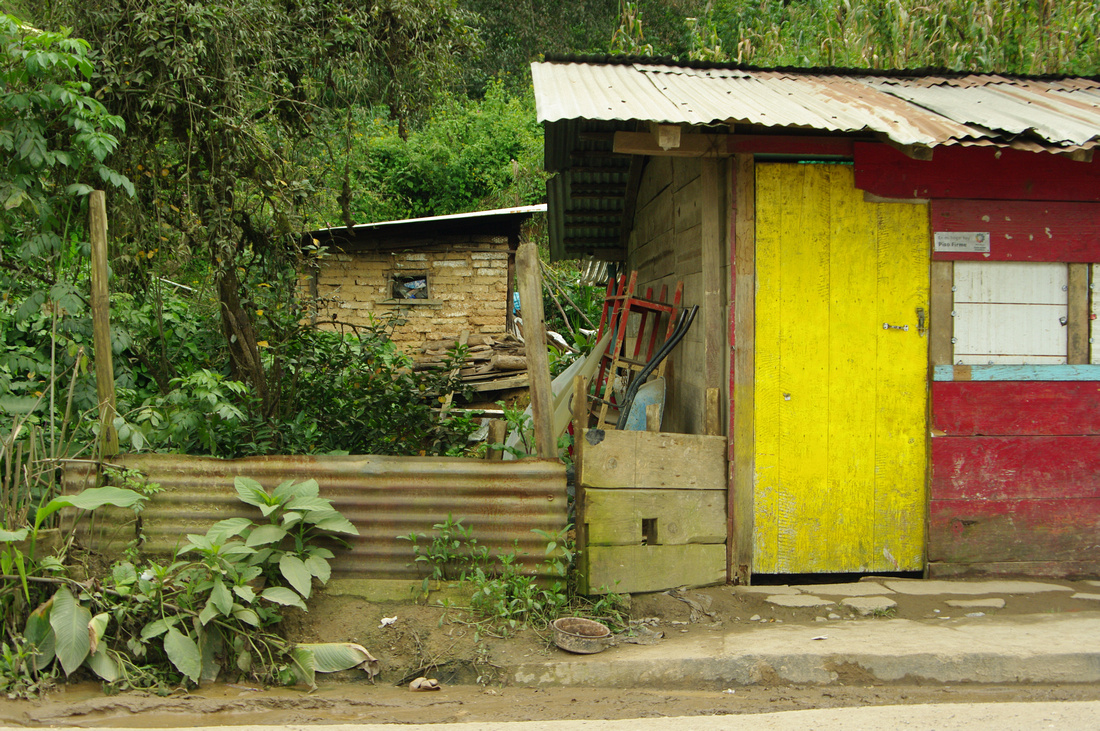

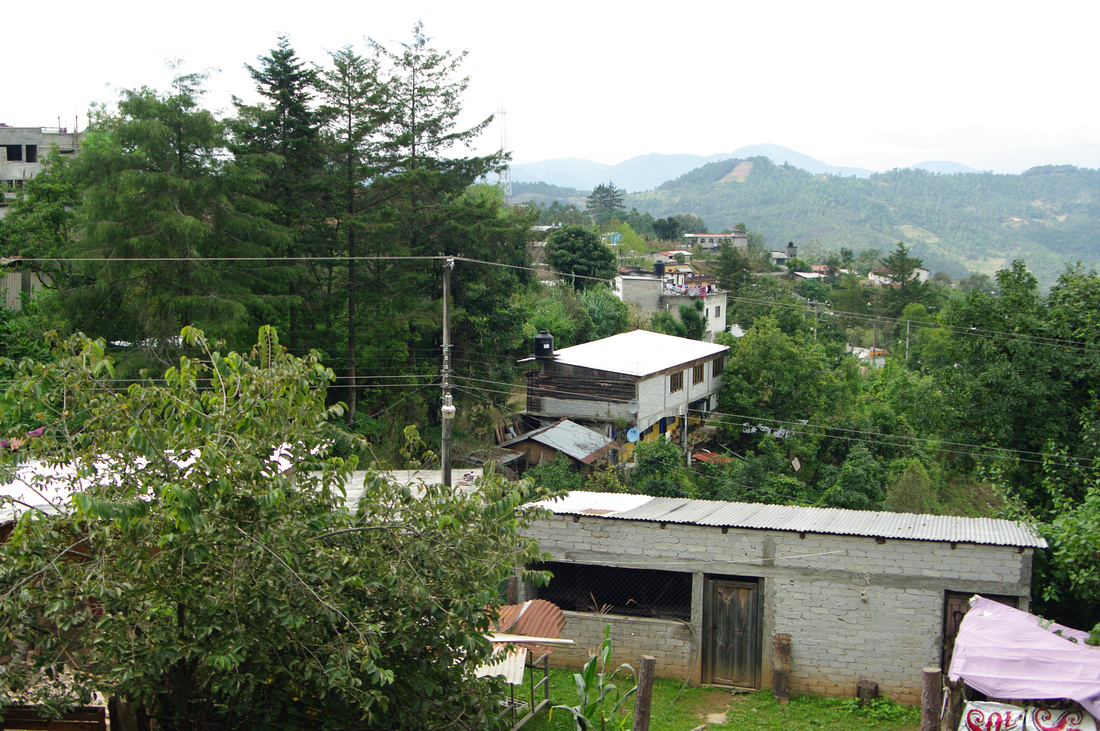

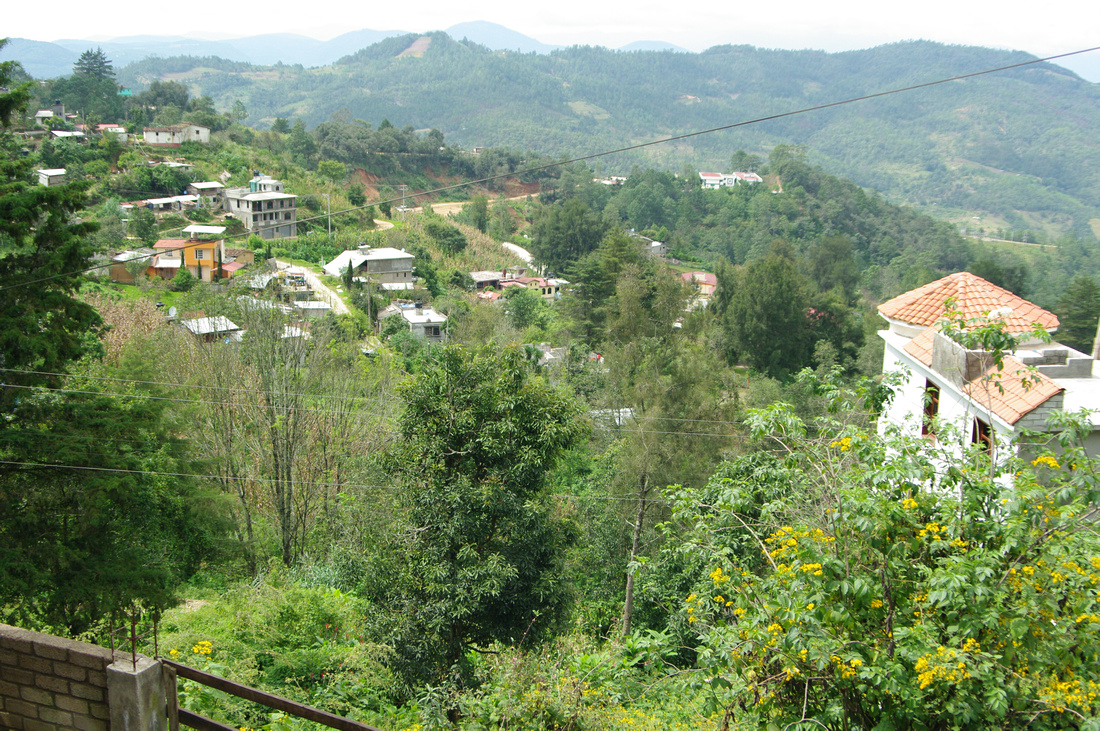

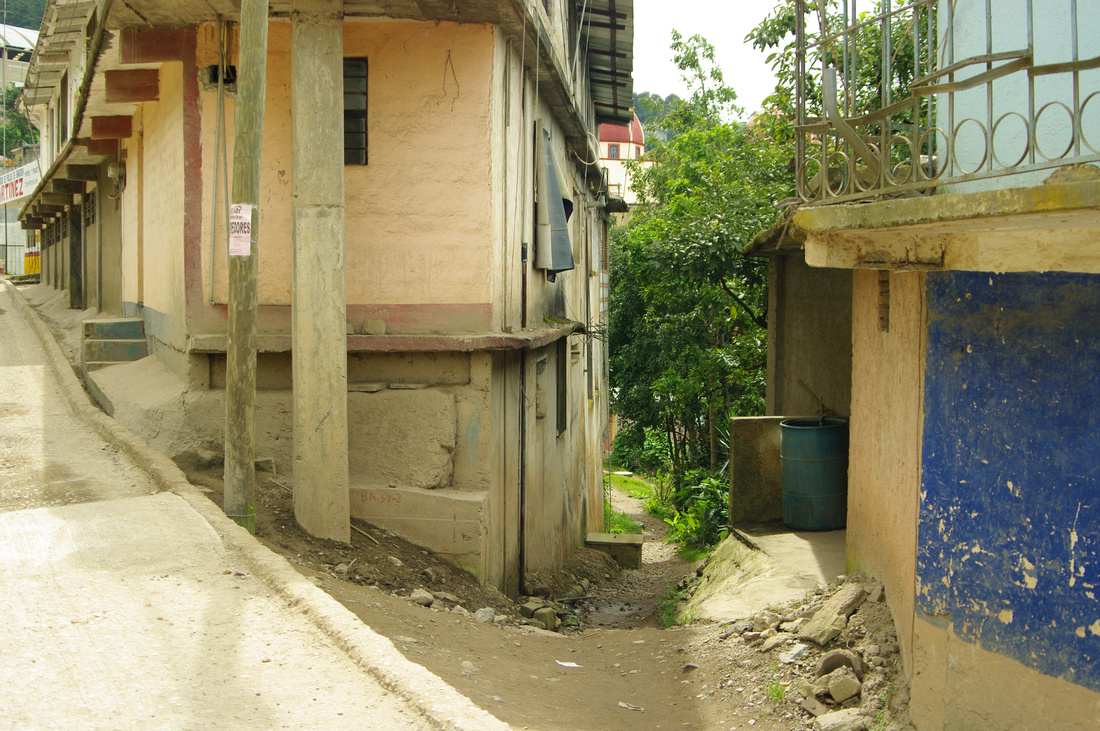



This past week we ate about as far away from traditional Mexican as you can get. A couple from Mitla recently moved back from the States after living twenty years in Los Angeles. They opened a restaurant called “Pink Burger”. We had to try it. So Monday we ate barbecued chicken wings. They were fantastic! Tuesday Beth made chicken cacciatore. It was also very tasty. Wednesday we had to make a run to Oaxaca for a friend so we stopped at our favorite Chinese restaurant on the way back. The food there is always fresh and we always overeat. Thursday we were invited to a birthday party in Tlacolula. In a one in a million chance they served hamburgers and fries. Not a typical meal here! Friday our friends Jeff and Elia came by to cook pizza. Don’t remember a better tasting pizza! Saturday Beth prepared American style chicken vegetable soup. Delicious!!!!!! Back to beans and rice this week.
Yesenia with cake on her face. She got it pretty good! A toast was made to Yesenia. Mom, dad, padrinos, family members, and friends said a few words. It was very touching. What a great support system she has. She is a beautiful young woman. We wish her the best!!!


This is Jeff our pizza guru. We kind of see him as our Dr. Phill but Jeff doesn't talk nonsense and he doesn't have to kiss Oprah's ass!!!!!!
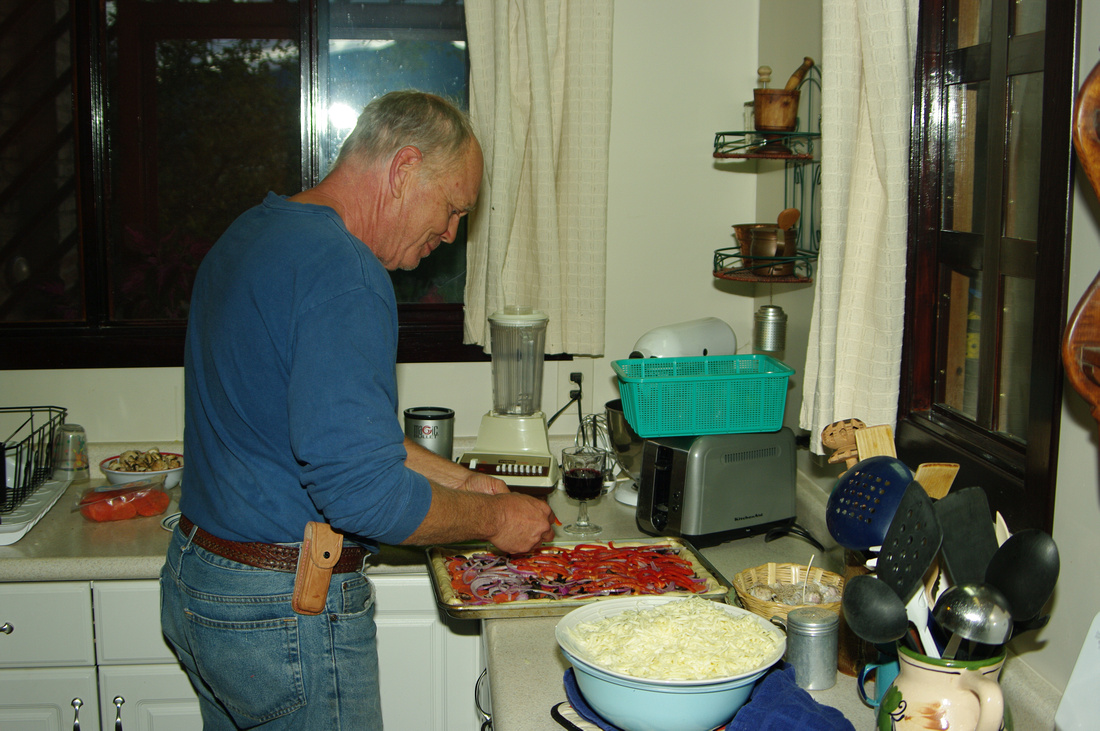

Epifanio's son Jacobo came over last week to seal up the window in our patio. During a break we drank coffee and chatted. The subject of Oaxaca city came up. Jacabo's village of San Baltazar is about forty five miles from Oaxaca. He rarely visits the city. Here is why. For he and his wife to make the round trip it costs one hundred and forty pesos. And that's leaving the kids with family. Jacabo makes two hundred pesos a day. Just the bus ride eats up about three quarters of a day's pay. If they eat there they'll spend more than a days pay aside from their purchases. Jacobo is a bricklayer so he needs pants that will hold up to the punishment they receive on the job. A pair of levis costs about 700 pesos. He buys knock offs that are far from levi quality. We also talked about tools for his work. Drills, saws, and grinders are a must to have. The price of good tools is higher here than in the States. He recently bought a hammer drill that cost one thousand six hundred pesos. Jacobo also has two girls in school so there is the expense of clothing, books, lunches, and writing material. The day that Jacobo worked for us was his day off. He often works on his day off to make a little extra. During our conversation I couldn't help but think about so many Mexicans entering the US. When you live down here you get a real insight on what motivates so many to journey north. Jacabo did work in the US. That's how he built his home. Mind you Jacobo wasn't whining. He and I have been friends for almost twenty years. Our conversation was about life here.
Comments
Design-wise, the flat, concrete roofs with no sealer worked very well in most cases when the rainy season started. The houses built along side roads up a mountain had the roof even with the road and served as the parking spaces. Yow!
I really enjoy your blogs, especially about the different cultures you experience. The Mixe sound like a wonderful people. Celebrating important life events such as a roof. Absolutely very cool!
Thank you again for keeping the blog going. I do enjoy them. Thank you, Kevin